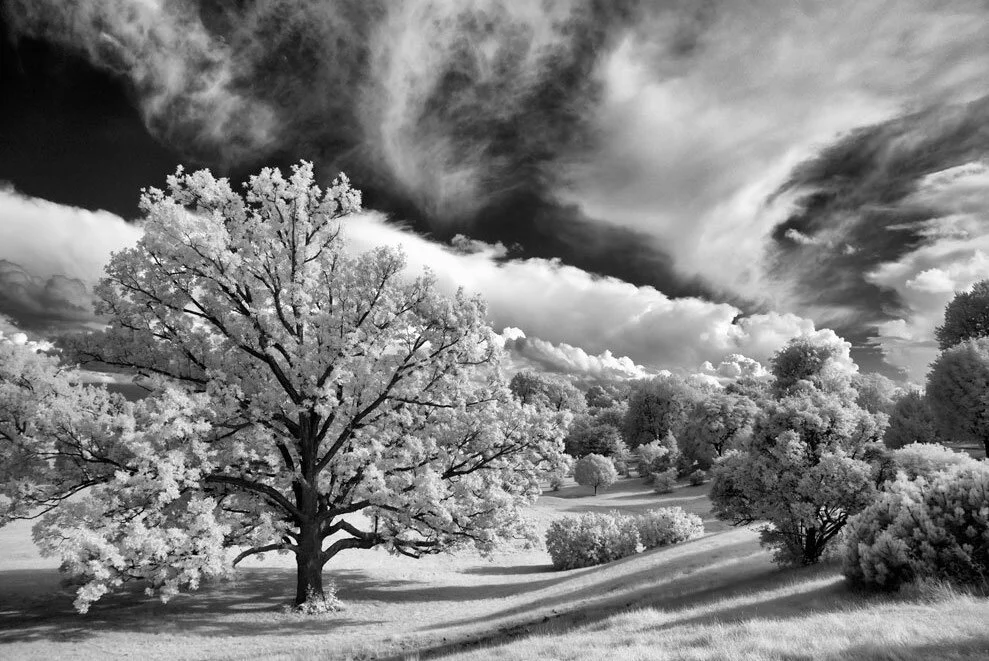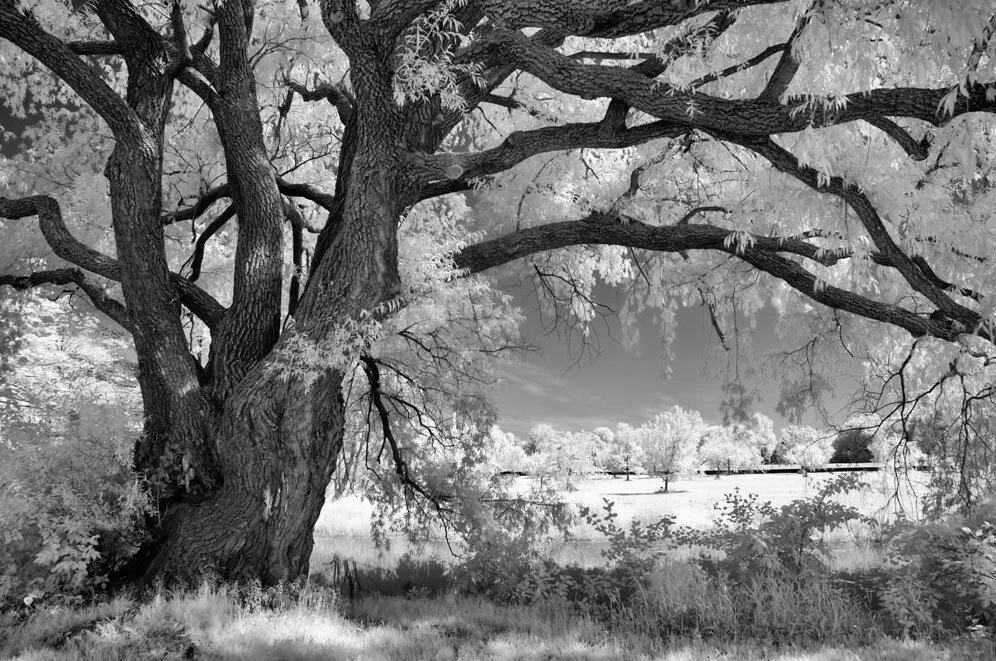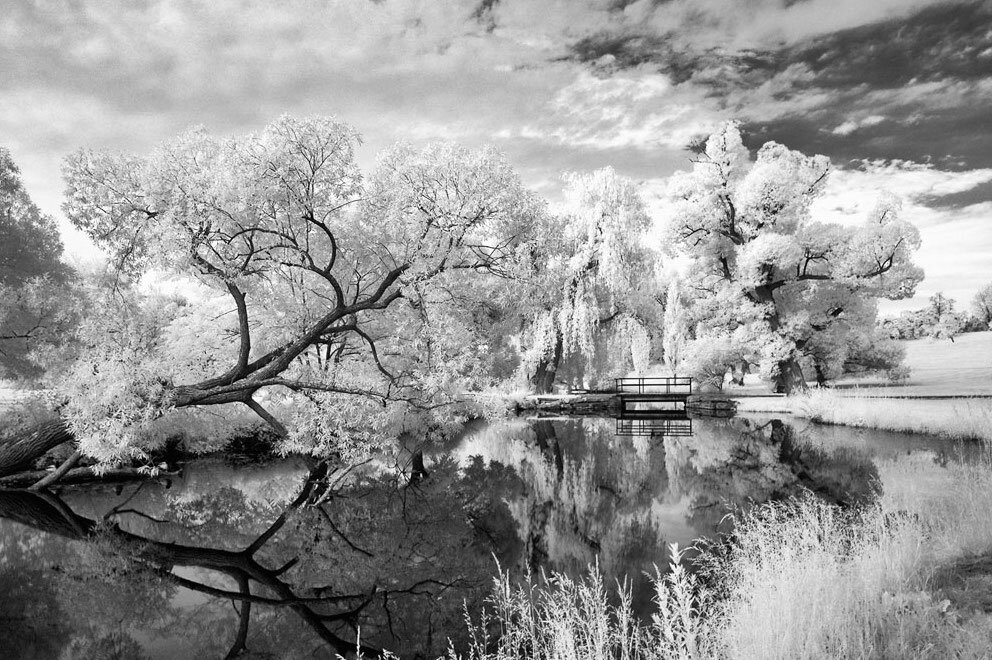Raymond Roy, Photographer
“The ambience of this garden of trees resonates strongly with my creative vision and reaffirms my belief that the mindful preservation of our natural environment is fundamental to a healthy and sustained existence for this planet.”
Photographs: Raymond Roy
Q.1. When did you first become interested in plants, trees and nature? Do you have a particular childhood memory associated with spending time around trees?
My first discovery of the natural world that I can clearly remember was when I was about five years old. My parents took me on a long walk in the Black Forest in Germany. I was mesmerized, in awe looking way up at the towering trees, the smells, sounds of birdsong and the hypnotic gurgling of water flowing along a small creek, the colourful wildflowers and buzzing of insects. It all seemed so beautifully alive and refreshing at a time when I was recuperating from a serious burn injury. That experience was like medicine, therapy for my young body and soul. On our way back we encountered a small hut and an old man just off the trail. I remember vividly this woodsman showing me a tree branch he picked up from the forest floor that had grooves and channels etched into it by insect larvae and telling me almost in a whisper that those strange markings were “maps to hidden treasure”. That experience has had a profound effect and influence on my approach to creating art and my relationship to and love of our natural environment. Along with tree photographs I also make drawings that have been inspired by those mysterious organic “maps to hidden treasure” etched onto the dead tree branches found decaying on the forest floor and so important to the ecology of that biomass.
Not long after returning back to Canada I discovered outside the house a package of seeds with no markings and proceeded to plant them in an empty balcony pot. I eagerly watered and cared for them as tiny sprouts slowly started poking their green heads out of the soul. I was fascinated by this growing life-force that required only earth, water and sunshine to thrive. The funny thing is that these weren’t flower or vegetable seeds which I expected to grow but just plain old grass seed. But what a beautiful green carpet grew in that planter. Years later I discovered Walt Whitman’s wonderful poem Leaves of Grass. I have felt a very strong affinity with his poetic vision after that experience spending hours caring for and watching my leaves of grass thrive and grow into a small green forest.
Q. 2. When did you start photographing trees and what attracts you to trees as subject matter?
I started photographing trees seriously when I was in art school. At the time I was working on a portfolio of photographs of abandoned architectural spaces which I’ve since published as a book titled Contemporary Ruins. In parallel, I discovered an affinity between this natural decay of stone, glass and steel with that wonderful almost fractal geometry of living and dying decomposing trees taking root and reclaiming parts of these ruins. This realization grew into an attraction to the tree as a subject to photograph and contemplate; there has always been for me as an artist that dialogue between my urban environment and the natural landscape which coexist together within the city.
My most recent project is a book I’ve published titled Urban Codex where I photographed the decay of paper flyers and notices over time that I found stapled onto massive Western Red Cedar or Red Pine telephone poles. Those ubiquitous dead trees that we don’t see for the forest of them all around us.
Urban Codex
A codex in Latin literally means “trunk of a tree” and was initially developed from wooden writing tablets into the books we read today. The ubiquitous urban tree trunk is the bare wooden telephone pole, which has been used since its invention as a public message board for notices about various social and cultural activities; public meetings, music concerts, art exhibitions, political rallies, lost and found, advertisements, and anything else that needs to be communicated in a free and public forum. The gradual addition, removal and weathering of these sheets of paper over time creates a chaotic fragmentation, a deep layering and stratification of textual elements whose original meanings are obscured and transformed into a unique urban codex.
The photographs in this book were made in Ottawa over more than a decade and reflect my ongoing explorations on the idea that the only real constant is change. They document the entropic decay process within the mysterious flow of time and clearly reveal the inherent disintegration of form and content, leaving viewers to explore and create their own specific readings and interpretations.
I am also interested in the visual topography and abstraction of the aged and torn paper, rusted staples, and the layering of light and shadow. The patina and markings create a wonderful quilted landscape where meaning is fragmented and transformed into a new translation. The archaeology of the urban codex is created by a natural metamorphosis over an extended period of time and exposes a remarkable deconstructed reality. Similar in effect to the art techniques of collage and décollage these readymade tableaus, through random juxtapositions, alter and change the original message by suggesting rather than revealing a specific meaning.
Q. 3. Many of your recent photographs were taken at the Arboretum at the Central Experimental Farm. What drew you to the Arboretum and what have you discovered by your time spent there?
The Arboretum is a unique oasis of calm and a wonderfully organic space for communing with nature; a respite from the daily routine of city life. This diverse landscape for me is both a sanctuary and a creative research centre. The main thing that I’ve discovered over my lifetime is that the Arboretum is essential for the quality of life in Ottawa; a space I use on a regular basis to make art, practice taiji and meditate. It is a space loved and used by many who embrace its innate aura of peace and tranquillity. I believe strongly that every city should have a similar forest of trees at its heart. The ambience of this garden of trees resonates strongly with my creative vision and reaffirms my belief that the mindful preservation of our natural environment is fundamental to a healthy and sustained existence for this planet.
Q. 4. Can you describe the camera and the technique you used to capture these particular tree images (above) at the Arboretum?
The camera records an image through mechanical reproduction and by its very nature can only imitate the visual perception of external reality. My goal as an artist is to transform the mimetic image into a visually poetic form through a process of experimentation. For this series of tree photographs, I work with a modified digital camera which exposes only the invisible near Infra-Red wavelength of the electromagnetic spectrum of energy. I then apply extensive adjustments to the original exposure to achieve the final photo "drawing”. Aesthetically I am fascinated by the invisible light that emanates through this process revealing the natural skeleton and fractal geometry of the tree branches underneath.
Q. 5. As a photographer, how do you use your creativity and artistic expression to address pressing environmental issues?
I hope the experience of viewing my art encourages people to stop and think about the wonderful energy and beauty in the natural world around them and hopefully in the process of looking to stop and seriously reflect on the pressing issues of climate change and habitat destruction. My body of art does not overtly address specific environmental issues but rather I feel embraces the underlying reality of our symbiotic relationship to the natural world. My arts subtle, inherent power is to reaffirm what we are so sadly losing through unrestrained growth and mass consumption. It has the power to open eyes and minds and in that respect encourage change and action. I am not a politician who can initiate extended change but at the very least my art can play a role in creating awareness of what we will lose without concrete action. Sustainable development is the answer but sadly not many seem to be listening. Diversity rather than monoculture, with more not fewer trees to filter out our polluted air, decrease carbon and replenishes the oxygen so essential to life on this planet.
Q. 6. In your opinion, what is the importance of the natural environment in urban centres?
When I first visited New York City I was astonished at how beautiful and important Central Park was to the physical and psychological well being of its millions of citizens. Those thousands of trees are literally the heart and lungs of that big city, much like the Arboretum here in Ottawa. Trees and parks make for a more connected and interwoven link between nature and the built-up urban city centres. We must stop planning and developing around the use of the automobile and restructure our cities to give priorities to well thought out natural spaces with much more emphasis on trees and green spaces that increase the quality of life in the environment we live and work. Fortunately, when I look out the window of my 9th floor studio located in Ottawa’s Centertown I can see a beautiful urban forest of trees dispersed amongst the neighbourhood streets and homes.
Q. 7. Finally, do you have a favourite tree in Ottawa? If so, which one, where is it located and why this particular tree?
My favourite tree in Ottawa is the Bebb's Oak (Quercus bebbiana) which is in the Arboretum. She is over 100 yrs old and sadly was a few years ago struck by lightning and has lost a big chunk of her trunk and lower branches ... but she is still thriving and healthy nonetheless. I love this tree, like so many other people, because of its wonderful physical presence and the natural vitality it exudes. The lower branches alone are as thick around and as long as the trees growing around it are wide and high. To think that this magnificent oak tree grew from a small seed sounds a bit like a cliché but I still marvel that something so beautiful could reach such stature and dignity on only a diet of earth, water and sunshine.
To see more of Raymond’s work, visit:
Magnetic Fields - Invisible Light
EcoArt: https://www.ecoartdatabase.org/en/showcase/magnetic-fields-invisible-light/detail-ajax
Vimeo: https://vimeo.com/327879999






